History
The Rise Of The South Korean Motor Industry
 When I was a child, I hardly ever saw a car made in South Korea. Japanese cars, yes. They were everywhere. But cars from South Korea, no. However, after about 2000, I started seeing them everywhere. What was behind the big upsurge? Was it simply the case that I didn’t notice them on the roads, or was it that they weren’t around?
When I was a child, I hardly ever saw a car made in South Korea. Japanese cars, yes. They were everywhere. But cars from South Korea, no. However, after about 2000, I started seeing them everywhere. What was behind the big upsurge? Was it simply the case that I didn’t notice them on the roads, or was it that they weren’t around?
It’s certainly the case that today, South Korean cars are among the most popular best sellers on the roads. And it’s certainly true that the South Korean motor industry has absolutely mushroomed of the past 50-60 years. In fact, this is true of many industries in South Korea. Back in the 1950s, Korea had barely any heavy industry going. Today, it’s a work leader in a number of fields, including the automotive industry.
Before we go any further, quick note: to ensure that this article doesn’t fall into the TL/DR category, we’ll refer to “Korea” from here on out instead of South Korea. North and South Korea went their separate ways in 1953 at the end of the Korean Civil War, which was when the Korean motor industry got started. Given North Korea’s political stance, we don’t hear much about their cars…
Not that politics have nothing to do with the Korean motor industry. According to one historian on the topic, the Korean government played a long-term game, creating policies and strategies that guided not just the motor industry but other industry sectors (e.g., ship building) across the years.
From Zero To Hero In A Few Decades
The Korean motor industry got started in 1953 when the US military forces on bases in the South needed more spare parts for their Jeeps. They sent up a local assembly plant with the Jeep name to make these spare parts. The owners of the company also had the bright idea of using old oil drums left behind by the army to make the chassis for their own vehicles, known as the Sibal, which were very popular as taxis. And that’s where the Korean motor industry got started.
After the success of the factory for spare parts for Jeeps, other companies started looking at Korea as a location for production lines and factories – and Jeep kept on going. These were often owned by US and Japanese car companies. This went on until 1962, when the Korean government made a law meaning that foreign companies were only allowed to set up joint ventures that local automotive companies had a share in.
During this period, a surprising number of vehicles that we think of as Japanese or American were actually put together in Korea. Mazda, Nissan, Fiat and Ford were just some of them. In fact, Kia started off as an assembly plant for Mazdas, whereas Hyundai was originally a factory for producing Ford Cortinas.
However, the joint venture model wasn’t enough for the Korean government, as they wanted to stimulate the local economy and industry, and reduce the dependence on foreign companies. In 1973, they therefore switched to focus cars that were not just manufactured in Korea but developed there as well. Some of the companies began the process of developing their own products. To do this, they often copied what they had seen during the process of putting other vehicles together, with a few wee tweaks to make them unique. This often involved using licensed parts from companies outside Korea to ensure a good quality product before the final shift to coming up with their own innovations. And things took off from there!
Hyundai – A Case Study
Hyundai is a typical example of a Korean car company that went through all the stages of imitation and innovation. This company started in the late 1960s as an assembly line for the Ford Cortina. When the Korean government called for locally designed cars in the 1970s, they got licences from other companies for various technologies and developed a locally designed car, the Pony. This was followed by the Excel in 1980. Both of these used tech licensed by Mitsubishi. Because the Excel and Pony sold so well and competed with Mitsubishi, the Japanese company didn’t renew the license for any new tech. Wanting to develop further, Hyundai grabbed technological licenses from a number of different companies just in case, and also set up a training consultancy, where trainee developers headed over to Italy to learn the principles of top car design. After 18 months in Italy, these trainees came back to Korea primed with their new knowledge.
What they (and trainees from other Korean companies such as Kia and Daewoo) had learned worked well. In 1993, the Elantra was Australia’s best-selling vehicle. After Kia and Hyundai joined forces, sales of Korean cars grew even more, until, in 2010, the Sonata and Elantra got onto the list of 10 ton best sellers worldwide. In 2013, Hyundai earned more from car sales than BMW, Honda and Peugeot. In short, the Korean motor industry is a force to be reckoned with, and Korea is certainly one of the countries you should think of when you think of places where cars are made.
You may very easily have driven or owned a Korean car at some point; although I haven’t done so personally, various friends and family members have, and they found them to be sound, reliable and good to drive.
Where To (Or From) Next?
Korean cars may be here to stay, but one has to wonder who’s next? Where will our cars come from in the future? We’ve already seen a few of the Chinese players (LDV, Great Wall and its subsidiary, Haval) enter the Australian market – will we see some of the others? Geely already owns Volvo, so will we see more actual Geely vehicles? India’s another possibility, with a few Tatas and Mahindras already hitting Australian roads. Other Asian countries currently have factories assembling vehicles for other countries, so will Thailand, Vietnam and Malaysia take the same route as Korea has done? What about countries from beyond Asia – are we going to drive vehicles from Brazil’s Effa or Uganda’s Kiira? Given the trend towards EVs and the fact that much of the world’s lithium for car batteries comes from African nations, I won’t be the least bit surprised if African vehicles started appearing on the market around the world in the next decade or so.
Remember this BMW?
Remember the Batmobile? An absolute classic BMW that has been set in motoring history is the old BMW 3.0 CSL. Known as the Batmobile, the quick and very unique 3.0 CSL BMW Coupe was first manufactured around 1973. At that time, the car was raced in the European Touring Car Championship, which it won. In fact, the car was so good that it won the Championship for four years on the trot.
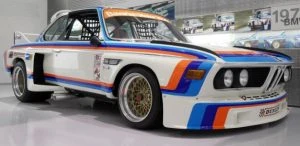
As a celebration, 50 years on from the release of the original Batmobile and as a 50 year celebration of their M division vehicles, BMW are making a very limited line of these brand new BMW 3.0 CSL Coupes that house the most powerful 6-cylinder engine BMW has ever produced for a road-legal vehicle. Only 50 of the cars will be made, making it an insanely rare vehicle on the road, while also ensuring that it won’t be purchased cheaply.

The new BMW 3.0 CSL comes with a six-speed manual gearbox, RWD, and 412 Nm of power. The engine has been based on the sweet 3.0-litre twin-turbo engine that is used in the current BMW M4 CSL but with a lift in power. The BMW M4 can run through the 0-100 km/h dash in a bit over four seconds, and the rare 3.0 CSL will likely better that.
The latest Batmobile, like the M4 CSL, comes with only the two front seats and no back seats. The interior inside the BMW 3.0 CSL Coupe is similar to the M4 CSL’s in structure and flow, yet there are plenty of special logos, detailing and design features to hark it back to the original. For instance, you’ll notice the logos on the headrests and some new horizontal stripes on the backrests match the looks of the old 3.0 CSL.
Out on the exterior is where you’ll find the design and bodywork really harking back to the original version, so the pair of round intakes on the sides of the bumper were inspired by the classic CSL’s design, so too were the vertical carbon fins that run down each side of the bonnet. And check out that chunky hindquarter where the rear wheel arches are beautifully flared and full, and sitting on top of the boot lid is a nice square spoiler to complete the stunning picture. The majority of the new car’s bodywork will have been constructed from carbon-fibre reinforced plastic with plenty of the parts having been made by hand.
A brand new BMW 3.0 CSL will be one of the rarest BMWs you can buy, and its also one of the most expensive. Pretty special though!
Australia’s Best Racing Circuits, and a Bit of Porsche News at the End.
Australia is a racing car enthusiast’s haven. When professional car racing first began in Australia, it lacked the local presence of manufacturers from brands like Ferrari and Mercedes – both of which helped establish a strong racing tradition in Europe. Despite Europe’s success, Australia was able to build racetracks down under that Australians and people around the world enjoyed visiting to watch – and even today they deliver some of the very best motor racing has to offer.
5 of the most famous racetracks in Australia would have to be:
- Phillip Island

You can find the Phillip Island Circuit situated about 2 hours outside of Melbourne City. Its racing heritage harks back to the 1920s. The current racetrack has been in use since 1956, although it has undergone minor changes during its life. Phillip Island is a wonderfully free-flowing circuit with a stunning backdrop of Port Phillip Bay. This famous track is loved by both motorcycle racers as well as those from the car racing fraternity. Phillip Island is currently a permanent yearly fixture for the MotoGP calendar.
Loads of motorbikes are included in the race circuit’s fastest lap times, with a Yamaha YZR–M1 ridden by Maverick Viñales in 2019 claiming the quickest lap time of 1 min:28 sec.49. You have to look down to 57th place before finding the quickest lap time accomplished by a car. 57th place was run in 1 min:38 sec.02 in a Porsche 918 Spyder driven by Matthias Hoffsummer. A 2020 BMW M3 ran around Phillips Island in 1 min: 45 sec.03 – a car that may be a little more recognisable and common to the masses.
- The Adelaide Street Circuit

The Adelaide Street Circuit hosted the Australian F1 Grand Prix in the 90s. This famous track saw racing icons Alain Prost, Aryton Senna, and Michael Schumacher score podiums on their journey to winning their F1 World Driver’s Championship. Because it was regularly the last race of the F1 season, the Adelaide Street Circuit track often had high stakes drama, with its competitors looking to win the last points of the season on what is a fast and flowing circuit. This drama added to the buzz in the air, playing host to a great party atmosphere once the final race was completed.
Although Melbourne has more recently created another famous racetrack – Albert Park – the Adelaide Street Circuit is still special. Although F1 cars no longer rip around this circuit, the V8 Supercars event has become one of the its best series.
The fastest time (1 min: 15 sec.381) ever recorded on the Adelaide Street Circuit was performed by Damon Hill back in 1993, while driving his Williams FW15C Renault Formula One.
- Albert Park

As mentioned above, Albert Park is in the seaside suburb of St Kilda, just outside the Melbourne CBD. Albert Park Circuit has played host to the Australian Grand Prix since 1996 and is a track that provides fantastic motor racing. Albert Park is also a track that anyone can tackle a lap of the circuit in their own car. It’s possible to drive around the circuit many times on any day of the week.
A Formula One Car called the Ferrari F1–75 driven by Charles Leclerc this year (2022) set a time of 1 min:20 sec.260, which is the fastest time ever set on the track. To give you an idea just how quick that is – Craig Baird drove his Mercedes AMG GT3 car around in 1 min: 54 sec.7311. Craig Baird’s record time in the GT3 Class is 8th quickest for a car more recognizable with cars can be driven on our roads legally.
- Sandown Raceway

Sandown Raceway is a track that, along with Phillip Island and Albert Park, enhances Victoria’s claim to possessing Australia’s greatest collection of famous racetracks. Until Albert Park arrived on the scene, Sandown was regarded by many as Victoria’s premier circuit. Sandown Raceway is where brilliant Aussie racers like Jack Brabham, Alan Jones, and other heroes have shown off their skills to a home audience. Sandown Raceway circuit still finds regular use today, most notably among drag racing enthusiasts.
- Bathurst/Mount Panorama

Formula One and MotoGP tracks inside Australia are rightfully famous. Events in these high-end categories are truly global, and even our home-grown Aussie drivers have made a name for themselves racing in these very events. But Mount Panorama/Bathurst is perhaps the most famous track of all to most Australians.
The New South Wales circuit plays a yearly host to the V8 Supercar race, and it has been a place where legendary battles between Ford and Holden have been played out before loyal fans. Mount Panorama is also where brilliant racers like Peter Brock and Craig Lowndes have cemented their status as giant motor racing legends.
The outright fastest time for getting around the Mount Panorama Track was accomplished in an Audi R8 LMS, where the 2 minute barrier was broken in a time of 1 min: 59 sec.2910; Christopher Mies was the R8’s driver. The quickest Touring Car that has ever made it round the circuit was a Ford Mustang GT driven by Chaz Mostert in the Supercars Championship of 2019 with a time of 2 min: 04 sec.7602.
Nurburgring (Germany)

And for something a little different… Porsche has just reclaimed the production EV Nürburgring lap record from Tesla, running a time of 7 min: 33 sec with a Porsche Taycan Turbo S EV. The Tesla Model S Plaid’s lap time was 7 min: 35 sec set in September of 2021.
The production performance EV class is rapidly growing and features a variety of body styles. This means Porsche will likely be challenged by faster EVs in the near future.
Fuel Miser Comparison (2010/2022) Audi-Fiat

One of the easiest ways to counter any rises in the fuel prices is to look at downsizing to a more economical car. If this sounds something you’d be into, then you certainly won’t be the first person to do so. We’ve just purchased a smaller Honda Jazz as a run around. Just think back to the fuel crisis in the seventies.
Anyway, it’s always an interesting topic, and who wouldn’t mind driving a new- to late-model car that spends less time at the gas pump. If you are a commuter, then you’ll appreciate owning a car that doesn’t cost the earth to run.
I thought I’d look at a list of cars that featured in an article written back in 2010, where I compared some of the thriftiest cars at that time. These were cars which had been designed to function as some of the world’s best fuel sippers. These vehicles were sold new in Australia, but I thought I’d add a new twist this time by adding what we can consider as the brand new version of these old models with their statistics for fuel consumption as a comparison – you know, a bit of nostalgia along with the new, and what’s changed – or not.
Note that the fuel consumption figures are based on the number of litres of fuel consumed every 100 km travelled. Often real world situations can play havoc with Lab tested fuel consumption figures, but this definitely gives you an interesting picture And, here is the list that is in alphabetical order – just to be helpful:
Audi
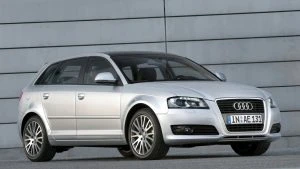
Audi A3 TDI 2010
The 2010 Audi A3 TDI offered a tidy package with practicality and comfort on its side. It uses the 1.9-litre TDI engine linked to a 5-speed manual gearbox that has plenty of useful torque and manages a fuel economy figure of around 4.5 litres/100 km. It was probably one of the roomiest economy cars on this list at the time.
Audi’s 2022 A3 is available in three model grades and two body styles ” Sportback (hatchback) and Sedan. Two powerplants are available for the stylish new A3. The most fuel efficient is the 35 TFSI 1.5-litre turbo-petrol with mild-hybrid technology producing 110kW/250Nm with a claimed 5 litres/100 km combined economy.

Audi A3 2022
Audi also has the smaller A1 model to add to your shopping list, which you can now buy new. It has a 1.0-litre 3-cylinder ULP engine with 85kW/200Nm and a 5.4 litres/100 km combined economy, or a 1.5-litre four-cylinder 110kW/250Nm option with a 5.8 litres/100 km combined economy.

Audi A1 2022
BMW
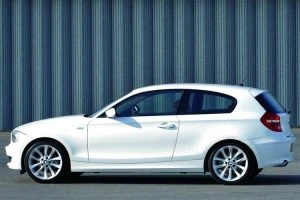
BMW 118d 2010
At the time, another small German car, the 2010 BMW 118d, offered a fun drive and used an automatic gearbox with a stop/start function for the engine. It also offers a slick 6-speed manual gearbox option and achieved an impressive 4.5 litres/100 km for its combined fuel economy. You have 300 Nm of torque, and it feels a punchy little powerhouse, and it’s also RWD!
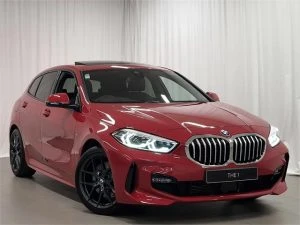
BMW 118i M Sport
In 2022, the 1-Series is available in a 118i M Sport version, which uses a 103kW/220Nm three-cylinder turbo ULP (unleaded petrol) motor with a claimed 5.9 litres/100km combined.
Citroen
The French loved to rival the Germans, and still do, so it was no surprise to see that the Citroen C3 and C4 featured in 2010. They are still nice-looking and comfortable cars. The Citroen C3 HDi offers the driver a tidy fuel consumption figure of 4.4 litres/100 km, while the bigger and roomier C4 HDi could deliver 4.5 litres/100 km in combined fuel economy runs.
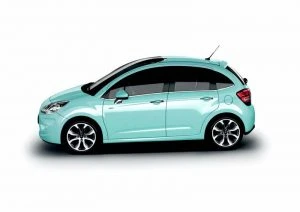
Citroen C3 2010
2022 sees Citroen’s C3 with much more grown-up styling, and a 1.2-litre three-cylinder 82kW/205NmTurbo petrol engine that delivers the power through a 6-speed automatic FWD driveline. Fuel consumption should see around 5.7–6.4 litres for a Worldwide Harmonised Light Vehicle Test Procedure (WLTP) combined cycle, which is the current testing process for measuring a new car’s fuel economy, electric driving range, and emissions.

Citroen C3 2022
Fiat
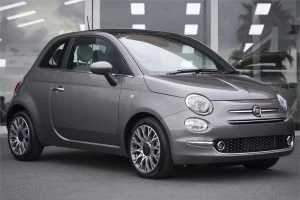
Fiat 500 2022
One of the 2010 super cuties, and still with endless loads of flair, is the nicely packaged turbo-diesel Fiat 500 that captures your attention. Whether it is the 1.3 JTD engine mated to a 5-speed or 6-speed manual gearbox, both options provided a thrifty 4.0–4.5 litres/100 km fuel consumption.
2022 Fiat 500 cars are still available new, of course with all their modern updates and new technology like Apple CarPlay and Android Auto, Bluetooth connectivity, and updated safety technology. The current 500 and 500 Convertible offer a manual or single-clutch automated manual five-speed gearbox that underpins the driving force behind the 1.2-litre 4-cylinder engine producing 51kW and 102Nm. Fiat rate it good for around 4.9 litres/100 km on a combined run, making this a great modern car to drive in an urban setting.
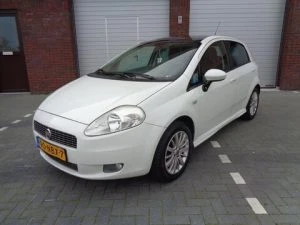
Fiat Punto 2010
In 2010, the Italian flamboyance continued with the Punto 1.3 and 1.4 JTD models. The Punto handles the road well, making it rewarding to drive, while returning a combined 4.6 litres/100 km. Currently, Fiat no longer sells a New Punto model, so, if you’re into Fiats, then the 500 is the one for you.